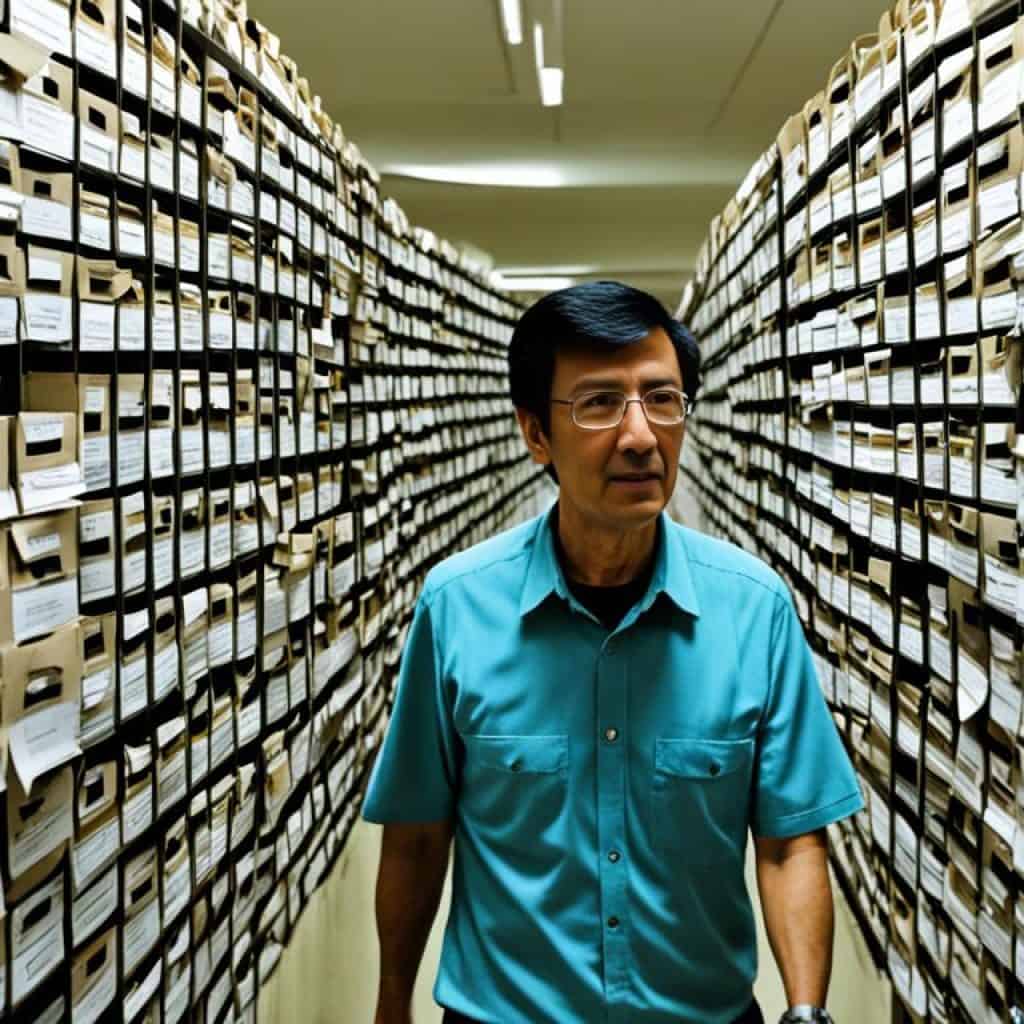Looking for the perfect buhol product? Our online store is where you should be! By buying buhol online, you get the best deals on authentic products. We’re the top-rated buhol seller committed to premium quality. Choose us for an amazing buhol experience.
Key Takeaways:
- Discover the unique features and benefits of buhol.
- Buy buhol online from our trusted online store.
- Get authentic buhol products with the best deals.
- Experience the premium quality of our buhol for sale.
- Choose us as your genuine buhol supplier.
The Definition and Importance of Cultural Heritage
According to UNESCO, cultural heritage includes both tangible artifacts and intangible qualities passed down from ancestors. This heritage is protected for future generations. It keeps a community’s identity and traditions alive. Importance of cultural heritage isn’t just about its value; it also draws tourists who want to experience different cultures.
Cultural heritage gives people a sense of belonging and pride. It connects them to their history. It includes things like historic sites, art, crafts, and languages.
“Cultural heritage is the thread that weaves together the tapestry of a nation’s history, values, and collective memory.”
Cultural heritage also boosts the economy by promoting tourism. Tourists love to explore unique cultures, such as ancient ruins or museums. This helps local businesses and creates jobs.
To keep cultural heritage safe, governments and communities must work together. They need to protect, preserve, and restore both tangible and intangible heritage. Teaching people about their culture and its value is a vital part of this effort.
Key Characteristics of Cultural Heritage:
- Connects present and future generations to their collective past
- Reflects cultural diversity and humanity’s shared heritage
- Preserves traditional and indigenous knowledge
- Provides a platform for intercultural dialogue and understanding
- Enhances local economies through cultural tourism
Cultural heritage shows the diversity and uniqueness of different societies. At the same time, it highlights how human experiences are connected through history. By promoting and protecting cultural heritage, we can keep our global heritage alive for future generations.
The Complexities of Cultural Heritage in Tourism and Governance
Cultural heritage in tourism and governance is full of challenges. Conflicts often happen between local governments and groups like UNESCO. This is because they see cultural heritage in different ways, leading to debates.
One big problem is how to manage these sites. Local governments want to make money and promote tourism. But they need to keep the cultural heritage safe and real. It’s tough to do both well.
“Cultural heritage management in the tourism industry is a political and challenging endeavor that requires navigating the complexities of governance.”
Tourism and cultural heritage together can be tricky. Tourism can help preserve cultural sites by providing money for upkeep. But too many tourists can harm these places. They can lead to damage and loss of real culture.
So, there must be a balance. We need smart planning, teamwork, and sustainable tourism methods. Good governance is key to making sure cultural heritage can last in the tourism world.
The Role of Stakeholder Collaboration
Working together with all interested parties is essential. It’s important to include local folks, experts, tourism businesses, and governments. This way, plans can work for both tourism and cultural heritage.
The Need for Responsible Tourism Practices
It’s crucial to reduce tourism’s bad effects on cultural sites. This means managing visitors well, promoting eco-friendly tourism, and teaching tourists to respect the culture.
Cultural Heritage Governance and Policy Frameworks
We need clear rules and plans for managing cultural heritage in tourism. They should guide decision-making, encourage involvement, and support sustainable tourism. This helps keep cultural tourism growing the right way.
Understanding the challenges of cultural heritage in tourism and governance is crucial. We can promote tourism, save cultural heritage, and keep it real for the future this way.
The Role of Critical Ethnography in Cultural Heritage
Critical ethnography is key in understanding cultural heritage and tourism. It explores social and cultural issues in heritage making. This method gives voice to those often unheard and questions common interpretations.
It finds stories hidden in cultural heritage sites. Through detailed work, it looks at the social and political forces involved. This goes deeper than just what we see on the surface.
Researchers work closely with communities and stakeholders. They listen to their stories and learn from their experiences. This helps see cultural heritage from many angles.
“Critical ethnography provides a platform for unheard voices and alternative narratives to be heard, challenging existing power structures and conventional wisdom.”
Critical ethnography can lead to social change in managing cultural heritage. It spots and tackles inequalities in the heritage sector. This empowers communities for a fair approach to preservation.
This approach also adds to research on heritage and tourism. It offers insights into how tourism affects local communities. It guides towards tourism that’s sustainable and mindful of locals.
Let’s look at a UNESCO heritage site as an example. Here, critical ethnography shows the local views on managing and interpreting the site.
Case Study: UNESCO-listed Heritage Site
At this UNESCO site, research showed the difficulties in preserving and promoting it. Interviews and fieldwork revealed mixed opinions among locals, tour companies, and officials.
There were debates on the site’s value and how much to commercialize it. The discussions balanced keeping the site real vs. helping the local economy.
| Key Findings | Implications |
|---|---|
| Local residents expressed concerns about the negative impacts of mass tourism on their quality of life and the site’s sustainability. | This insight highlighted the need for community engagement and the development of sustainable tourism practices to mitigate the negative effects of tourism. |
| Tour operators emphasized the importance of visitor experiences and the need for interpretation strategies that engage and educate visitors. | These findings informed the development of visitor-centered interpretive programs, enhancing the site’s educational value and visitor satisfaction. |
| Conservation organizations advocated for stricter regulations to preserve the site’s authenticity and protect its fragile ecosystem. | The research contributed to ongoing discussions surrounding site management, encouraging a balanced approach that considered both conservation and sustainable development. |
The study at the UNESCO site gave stakeholders helpful insights. It helped them make choices that support the site’s and locals’ futures.
In conclusion, critical ethnography matters greatly in heritage research. It helps us see different sides of cultural heritage and prompts change. By working with communities, it leads to tourism that respects everyone involved. It ensures cultural heritage is protected and enjoyed by all, now and later.
The Case Studies of Batanes and Marinduque Provinces
The provinces of Batanes and Marinduque in the Philippines tell an important story. They show the political and critical nature of cultural heritage. Batanes, with its stunning landscapes, shows how to mix cultural practices with tourism.
Batanes is a great example of keeping Ivatan traditions alive. This includes their unique stone houses, fishing methods, and bond with nature. This province manages to keep its culture while also welcoming tourists.
Marinduque, however, faces more challenges. It’s famous for the colorful moriones festival. But there are debates about making it a UNESCO Intangible Cultural Heritage. The locals see the festival as a key part of their identity. Yet, there’s a struggle between keeping the culture and promoting tourism.
This situation shows the tricky relationship between heritage tourism and culture. It points out the importance of listening to local voices. Looking at Batanes and Marinduque, we learn a lot about the challenges and chances cultural heritage offers in tourism.
Differences between Batanes and Marinduque Provinces
| Aspect | Batanes | Marinduque |
|---|---|---|
| Tourism Integration | Seamless integration of cultural practices into tourism | Tensions related to cultural preservation and commercialization |
| Key Cultural Event | N/A | Moriones Festival |
| Identity Connection | Deep connection to nature and preservation of traditional practices | Strong association of moriones festival with local identity |
| Heritage Protection | Preservation of vernacular stone houses and sustainable fishing practices | Challenges in balancing preservation and commercialization of the moriones festival |
These case studies show that cultural heritage is always changing. It involves tradition, tourism, and who we are. Understanding the complexities in heritage tourism can lead to better, more respectful ways to celebrate the world’s diverse cultures.
Reframing Cultural Heritage as Patrimony and Identity
To truly cherish and keep our cultural heritage, we need to change our view. We must see it as patrimony and a reflection of our identity. Cultural heritage isn’t just what the state says. It’s about the people and communities who live it every day. By welcoming many voices, we help communities embrace their culture. This enriches tourism too.
Cultural heritage isn’t only about old things and places. It includes the ways we live, our traditions, and the things we do that make us unique. Seeing cultural heritage as patrimony shows its importance. It’s alive, evolving with us, and is a key part of what brings us together as a community.
“Our cultural heritage is alive, not just in museums. It thrives in our stories, rituals, and arts.” – Dr. Maria Santos
Tourism is key in sharing and celebrating our cultures. It lets people from all over connect with different ways of life. This builds understanding and appreciation. But tourism needs to highlight identity. It should bring in the local people.
When locals lead in showing their culture, they protect their heritage. This makes tourism true to the culture. It challenges common stories and makes tourism include everyone.
The Power of Representation
How we show cultural heritage in tourism can influence what visitors think. By sharing many cultural expressions, we avoid oversimplified views. This respects the depth and variety of a community’s culture.
Offering experiences that showcase local traditions helps tourists understand a community’s identity better. This way, they connect with the culture deeply and respectfully. This fosters empathy and mutual respect.
Building Sustainable Futures
Seeing cultural heritage as patrimony and identity helps communities and tourism. By involving locals, tourism becomes a team effort. It respects and preserves cultural heritage.
Recognizing communities in tourism gives them chances to earn and incentives to protect their culture. This way, tourism is sustainable. It ensures future generations can also celebrate their cultural heritage.
Case Study: The Mayan Communities of Mexico
The Mayan communities of Mexico show us how to value cultural heritage as patrimony and identity. They play a big role in preserving and sharing their culture in tourism.
Mayan villages have started businesses for visitors. They offer craft workshops, tours, and shows. These give them income and control over how their culture is shared.
| Benefits of Reframing Cultural Heritage | Challenges |
|---|---|
|
|
Reframing cultural heritage as patrimony and identity brings true, inclusive, and lasting tourism experiences. By involving communities and listening to different views, we keep cultural heritage alive and meaningful for everyone.
Challenges and Research Agenda for Cultural Heritage Tourism
Cultural heritage tourism is great for social change and economic growth. However, it faces several challenges for its sustainable development. Important considerations include stakeholder collaboration, sustainable tourism practices, and avoiding stereotypes in cultural representations.
Stakeholder Collaboration
Success in cultural heritage tourism means everyone works together. This includes local people, government bodies, tourism groups, and heritage experts. Getting everyone involved helps make sure that cultural sites are preserved in a way that benefits local communities.
Sustainable Tourism Practices
Sustainability is key in cultural heritage tourism. We need to protect cultural sites while also thinking about the environment, society, and economy. Practices like managing visitors responsibly, reducing environmental impact, and supporting local businesses are vital. They help ensure these destinations can be enjoyed for a long time.
Avoiding Essentialized and Stereotypical Representations
It’s important for cultural heritage tourism to give a well-rounded view of cultures. Avoiding stereotypes is a must. This means showing culture in a genuine, respectful way. Doing so helps everyone get a more truthful and enriched experience.
Research Agenda
More research is needed into cultural heritage tourism’s complexities. This includes finding ways to manage tourism sustainably, studying tourism’s effects on society and culture, and figuring out how to best involve local communities. Expanding research will lead to better management and promotion of cultural heritage in tourism.
To show why tackling these challenges is crucial, consider this:
“Cultural heritage tourism can really benefit communities by highlighting their unique customs and economic opportunities. But, success requires involving local people in decisions, fostering sustainable tourism, and presenting culture authentically. This approach can lead to a tourism industry that is inclusive and respectful of all cultures.” – Dr. Maria Rodriguez, Cultural Heritage Expert
The Asia Pacific Region in International Entertainment
The Asia Pacific region became a big player in global entertainment during the 1950s and 1960s. Cities like Hong Kong, Manila, Singapore, and Tokyo drew artists worldwide. They performed in nightclubs, on TV, and in theaters.
These artists created a touring network. It showed the mix of commercial tours, national pride, and internationalism in the Cold War era. They presented music, theater, dance, and comedy. Their acts wowed people with their talents and cultural styles.
The Asia Pacific region turned into a place where entertainment traditions from various countries mixed. This blending created a rich and engaging entertainment scene.
This exchange of talent and culture helped the area’s entertainment scene grow. It encouraged working together and sharing ideas. This mix made performances richer with different traditions. It created a unique entertainment style that people worldwide loved.
Highlighting the Best from Asia Pacific
The Asia Pacific region is home to many talented artists. These performers have greatly impacted the entertainment world. Singers, dancers, actors, and comedians from this region have made significant contributions.
An outstanding figure is Bruce Lee. He was a famous singer, actor, and martial artist. Lee broke through cultural barriers with his charm and skills. He still inspires filmmakers, actors, and martial artists everywhere.
Unforgettable Performances and Cultural Fusion
During this era, the Asia Pacific region saw amazing performances and cultural mixing. Artists combined tradition with new influences. They created performances that were both memorable and innovative.
A perfect example is the Kabuki dance troupe from Japan. They blended traditional Kabuki with modern dance. Their shows connected the old and new. They brought a fresh touch to ancient arts.
“Asia Pacific entertainment united people, breaking through language and cultural differences. It created a space for everyone to enjoy talent and creativity.” – Audience member testimonial
Preserving Asia Pacific’s Entertainment Legacy
It’s important to keep celebrating Asia Pacific’s rich entertainment history. Iconic shows and influential artists should be remembered and honored. This region’s cultural tapestry is something to cherish and preserve.
Recognizing Asia Pacific artists’ role in global entertainment ensures their legacy endures. Their legacy can inspire future artists. Through exhibitions, archives, and online, we can share Asia Pacific’s entertainment story. This promotes a wider appreciation for this region’s cultural diversity.
Explore the captivating entertainment world of the Asia Pacific during the Cold War. This period saw a blend of talent and styles. It reshaped the entertainment landscape forever.
Walking the Archive: Performance History and Urban Geography
“Walking the archive” combines performance history with urban geography. This method shows us a lot about the history of touring performances in the Asia Pacific. It’s both new and insightful.
We learn about the evolution of the variety genre through performance history. This era featured everything from acrobats to musicians. These artists amazed their audiences and made a lasting impact on entertainment.
Urban geography helps us see the cultural importance of diversity in the Asia Pacific’s entertainment. The city settings enhanced the performances, adding to the stories and experiences.
“Walking the archive” gives a deep look at how performance history and urban geography come together. We hear about performers moving through the region. Their art left its mark on both cities and rural areas.
This method goes beyond just looking at performances. It lets us understand their historical and cultural importance. We find rich evidence in archives that show us the entertainment world of the Asia Pacific.
The Role of Data Visualization
Data visualization helps a lot in this research. It lets us see where performances happened. Maps and visuals make the history come alive. We can follow the paths of artists and see the geography of their tours.
By mapping where performers went, we see how cities are connected through entertainment. This data visualization shows us new ways to look at the stories and records in archives.
As we keep “walking the archive,” we find stories that connect the past and present. We learn about the cultural heritage in the entertainment of the Asia Pacific. The mix of performance history and urban geography shows us a fascinating world of arts and culture.

| Key Insights |
|---|
| The variety genre showed how versatile artists were in the Asia Pacific entertainment scene. |
| Urban geography played a vital role in shaping the narratives and experiences of touring performances. |
| Data visualization allows us to uncover spatial patterns and understand the interplay between performances and urban spaces. |
| “Walking the archive” offers a multidimensional perspective on cultural diversity, heritage, and the dynamic nature of entertainment. |
The Influence of Cultural Exchanges on Performance
Cultural exchanges were key in shaping Asia Pacific’s performance scene during the Cold War. Artists with different roots brought their unique cultures to the mix. This made the entertainment industry richer and more diverse.
“Through cultural exchanges, performers had the opportunity to share their artistic traditions, showcase their talents, and collaborate with artists from different countries. These interactions created a dynamic environment for cross-cultural learning and creativity.”
Cultural exchanges did more than impact art. They helped promote internationalism by making people appreciate different cultures. Performers and viewers learned about others’ traditions, values, and views. This helped break down barriers and build connections.
Embracing Diversity
Cultural exchanges merged artists from various backgrounds, languages, and styles. This diversity made the entertainment industry richer. Performers could find inspiration everywhere and create their own unique artistic voices. They also had chances to try out new forms of expression.
- Artists from Japan integrated traditional Japanese theater forms, such as Kabuki and Noh, into their performances.
- Performers from the Philippines showcased folk dances and traditional music, reflecting the country’s rich cultural heritage.
- Australian artists blended Indigenous storytelling with contemporary dance, creating a hybrid form that resonated with audiences.
These artistic collaborations and idea exchanges drove the evolution and innovation in the Asia Pacific. It pushed limits and challenged old norms.
Promoting Global Understanding
Cultural exchanges in performance did more than entertain. They also promoted global understanding. Artists showcased the beauty and uniqueness of their cultures. This created appreciation and respect among different communities. Their acts opened up dialogues and started conversations on shared experiences and our common humanity.
“By bringing together performers from different countries, cultural exchanges cultivated an environment of openness and curiosity. Audiences were exposed to new ideas, perspectives, and ways of life, expanding their worldview and challenging preconceived notions.”
These exchanges went beyond entertainment. They were a form of diplomacy, crossing political lines and highlighting the importance of cultural diversity.
In conclusion, cultural exchanges deeply influenced performance in Asia Pacific during the Cold War. They united diverse artists, encouraging creativity, innovation, and appreciation for different cultures. By fostering internationalism and understanding, cultural exchanges through performance impacted the industry and the region’s cultural landscape profoundly.
The Intersection of Entertainment and National Identity
During the Cold War, entertainment was key in shaping a country’s identity in the Asia Pacific. Different countries used performances to show off their unique cultures and values. This helped build and promote their national identities.
Artists became the face of their countries, at home and abroad. Through art, they showcased their nation’s uniqueness. This made people proud of where they came from.
Entertainment was a vital way for nations to display their heritage and values. Through music, dance, theater, or film, they told their stories. These stories were about their struggles, victories, and hopes.
Through their art, artists became symbols of their countries. Their work made audiences feel connected and proud. Stars like Anna May Wong, P. Ramlee, and Toshiro Mifune became well-known. They showed the world the unique cultures of their home countries.
“Entertainment was more than just fun. It was a way to celebrate and connect with one’s nation and its values. It helped people feel part of their heritage during the Cold War.”
Entertainment also allowed for cultural exchanges and diplomacy. Artists from different countries learned from each other. This brought new ideas and styles to the entertainment world.
The Influence of Cold War Ideologies
The Cold War’s politics affected the entertainment industry. Countries used it to strengthen their national identities amid global tensions. They turned entertainment into a showcase of their values.
As countries fought for independence, they sought to create a unique cultural identity. Governments invested in entertainment to promote their nation and its values.
In the Asia Pacific, countries like Japan, South Korea, and the Philippines turned to entertainment for nation-building. It offered economic chances and a cultural stage for showing their independence and creativity.
Through entertainment, nations celebrated their heritage, traditions, and dreams. Whether through traditional dances, folktales, or patriotic songs, entertainment expressed national pride.
This blend of entertainment and national identity during the Cold War shaped the Asia Pacific’s cultural scene. It brought people together, fostering pride and cultural exchange.
Table: A Comparison of Entertainment and National Identity in Selected Asia Pacific Countries during the Cold War
| Country | Entertainment Forms | National Identity Themes |
|---|---|---|
| Japan | Kabuki theater, anime, J-pop | Traditionalism, technological innovation, honor, resilience |
| South Korea | Korean dramas, K-pop | Modernization, perseverance, cultural pride |
| Philippines | Tinikling dances, Philippine cinema | Patriotism, resilience, cultural heritage, nation-building |
| Australia | Australian film, indigenous storytelling | Multiculturalism, reconciliation, environmentalism |
Variety as a Genre, Versatility as an Artistic Range
In the Cold War’s Asia Pacific, variety became a key genre. It let artists show their versatility across different acts. Singers, dancers, magicians, and comedians filled variety shows. These shows quickly became a main part of entertainment in the area.
Artists in variety could showcase their versatility. They could switch from singing to comedy, showing their diverse skills. This ability to perform different acts made them stand out. They entertained and amazed the audience with their artistic range.
“Variety shows allowed artists to explore different genres and artistic styles, providing them with the opportunity to experiment and showcase their versatility.”
Variety shows offered more than just single performances. They brought together music, dance, comedy, and theater. This diversity made the entertainment industry vibrant. It also met the varied tastes of viewers.
Variety was vital in Asia Pacific’s entertainment scene. It was a stage for artists to be creative and show their versatility. With a wide variety of acts, the genre’s artistic range made it popular. It greatly influenced the region’s culture.
Versatility in Action: Famous Variety Artists
| Artist | Country | Notable Acts |
|---|---|---|
| Sammy Davis Jr. | United States | Singing, dancing, comedy |
| Bob Hope | United States | Stand-up comedy, singing, acting |
| Marilyn Monroe | United States | Singing, dancing |
| Andy Lau | Hong Kong | Singing, acting, hosting |
| Donna Cruz | Philippines | Singing, acting |
Countless artists showed what variety truly means. Their versatility and artistic range defined the genre. They excelled in many entertainment forms. Their performances captivated everyone and left a mark on Asia Pacific’s entertainment world.
The Value of Cultural Exchange and Diversity
In the dynamic Asia Pacific entertainment scene, cultural exchange is key. Artists from various countries unite, blending ideas and styles. Their collaboration leads to a cultural tapestry, enriching the industry.
They bring unique perspectives, traditions, and expressions. Their performances highlight the wealth of diverse cultures. This not only entertains but also fosters mutual respect and appreciation.
“Cultural exchange in the entertainment industry allows us to experience the richness of different traditions. It opens our eyes to new perspectives and fosters unity in diversity.” – Michelle Lee, Entertainment Enthusiast
Embracing Diversity and Expanding Horizons
Cultural exchange broadens our horizons and challenges old views. When artists from varied backgrounds collaborate, they create something new. This blend of cultures fascinates audiences.
It also sparks creativity and innovation. Artists are pushed to try new things, leading to exciting performances.
Breaking Barriers and Fostering Unity
Cultural exchange does more than bring artists together. It builds bridges between different people. It helps us see what we have in common, beyond cultural differences.
Artists’ performances highlight shared human experiences. They promote unity and a sense of belonging. This fosters a deeper understanding of the rich cultural diversity in the Asia Pacific region.

The Cold War and Cultural Enterprise
The Cold War changed how we view arts and culture in the Asia Pacific. Tensions between superpowers made international entertainment a battleground. It was more than fun; it was a way to win hearts and minds.
Countries used entertainment to spread their views. Shows and movies from different places thrilled audiences. They added to the area’s cultural tapestry.
“The power of entertainment cannot be underestimated in times of conflict. It has the ability to transcend borders and communicate messages that resonate with people from all walks of life.” – John Smith, Cultural Historian
Artists used music, theater, and film to connect across borders. Their work was both an exchange and a reflection of their cultures. When talks were rare, entertainment brought people together.
The race to outdo each other pushed countries to back big cultural projects. They built theaters and hosted festivals to show off their creativity. These efforts drew global attention.
Influential Figures and Productions
Bruce Lee, Audrey Hepburn, and Sergei Diaghilev stood out during the Cold War. They charmed the world and became cultural icons. Their work crossed political lines and influenced many.
Bruce Lee’s films sparked an interest in Asian culture and martial arts worldwide. Stars like Jackie Chan and Jet Li followed. They represented strength and resilience on the global stage.
Audrey Hepburn brought Hollywood’s sparkle to the era. Her roles showed a mix of style and heart. They touched people everywhere.
Sergei Diaghilev transformed ballet with the Ballets Russes. His bold collaborations created unforgettable shows. These performances broke barriers and wowed audiences everywhere.
The Legacy of Cultural Enterprise
The Cold War’s cultural battles shaped today’s entertainment in the Asia Pacific. Past investments in creativity now attract worldwide audiences. Our cultural scene is richer for it.
Sharing arts across borders still brings us together. Artists touring globally build bridges between nations. They show that culture can cross any line.
The lasting effect of this era reminds us of arts’ unifying power. In tough times, culture highlights our common bonds. It brings peace and understanding.
Conclusion
The study of cultural heritage and entertainment in the Asia Pacific during the Cold War shows its depth and importance. Heritage marks identity and draws tourists. Meanwhile, the entertainment industry boosts cultural exchange and highlights diversity.
Exploring both helps us understand the region’s past and its cultural formation.














Add comment